Zucchini white spots on leaves
White blotches on zucchini leaves may be normal or may be fungus
Question:
My zucchini plants are large, but now they have large white spots on their leaves and stems. It looks like they have grains of white sand on the top surface, but there is much more on the lower surface of many of the leaves. What is this and should I be worried?
B.G.
Alamogordo
Answer:
Zucchini squash plants will produce large white blotches on their leaves naturally as part of the leaf coloration. Small hairs on the surface of the leaf may give the appearance of sand as the light hits them, but it will be obvious that the main part of the white color is the leaf surface. These blotches are part of the leaf and will not rub off.
Powdery mildew fungus can also cause the appearance of white coloration on the leaves of squash and many other plants. In this case, the white coloration due to the "fruiting structures" of the fungus as they produce spores will look more like a dusting of flour on the leaf. It is common at this time of the year because the night temperatures are appropriate for growth and spore production in powdery mildew. To minimize powdery mildew problems, irrigate your garden early in the morning on every second or third day. The object is to allow the air around the leaves to dry by nightfall. If you water in the evening, the humidity around the plants will favor the growth of the fungus. If you water daily, the soil may remain moist enough to humidify the air, so water as infrequently as possible and early in the morning.
At this late time of the season, frost will soon kill the squash plants in much of New Mexico (if it has not happened already). That will solve the problem for this year. However, removing the plant debris from the garden will reduce the number of spores to cause problems next year (many will remain, so watering timing remains a consideration next year). You can compost this plant debris, but it is important that it is exposed to high composting temperatures that develop in the center of the compost pile to kill disease spores on the plant material. You can also put the plant debris into tightly closed plastic bags exposed to the sun for several days (so that the temperature inside the bag exceeds 130 degrees F.). This treatment will also kill the fungus and then you can compost the treated plant material without concern for spreading diseases next year.
You can also put the plant debris into tightly closed plastic bags exposed to the sun for several days (so that the temperature inside the bag exceeds 130 degrees F.). This treatment will also kill the fungus and then you can compost the treated plant material without concern for spreading diseases next year.
Marisa Y. Thompson, PhD, is the Extension Horticulture Specialist, in the Department of Extension Plant Sciences at the New Mexico State University Los Lunas Agricultural Science Center, email: desertblooms@nmsu.edu, office: 505-865-7340, ext. 113.
Links:
For more gardening information, visit the NMSU Extension Horticulture page at Desert Blooms and the NMSU Horticulture Publications page.
Send gardening questions to Southwest Yard and Garden - Attn: Dr. Marisa Thompson at desertblooms@nmsu.edu, or at the Desert Blooms Facebook.
Please copy your County Extension Agent and indicate your county of residence when you submit your question!
Help! There's White Powder or White Spots on My Zucchini Leaves!
Information
Do you have white powder or white spots on your zucchini leaves? There are a few causes for this problem.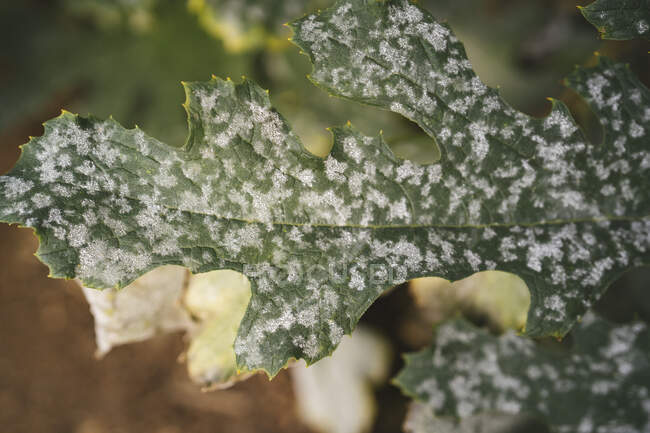 The good news is that most of the issues that cause this common problem are both treatable and preventable. In this article, gardening expert Merideth Corhs examines why this happens to your zucchini plants, and how to fix it.
The good news is that most of the issues that cause this common problem are both treatable and preventable. In this article, gardening expert Merideth Corhs examines why this happens to your zucchini plants, and how to fix it.
By Merideth Cohrs Last updated: August 8, 2022 | 5 min read
Zucchini is a true summer garden staple. This is a plant that doesn’t need too much to be happy – plant it in full sun, give it enough water, and fertilize – and it provides an abundance of fruit for our occasional attention.
If properly grown and cared for, your zucchini plant will produce so much fruit that you can eat it with every meal and still have plenty left over for friends and neighbors.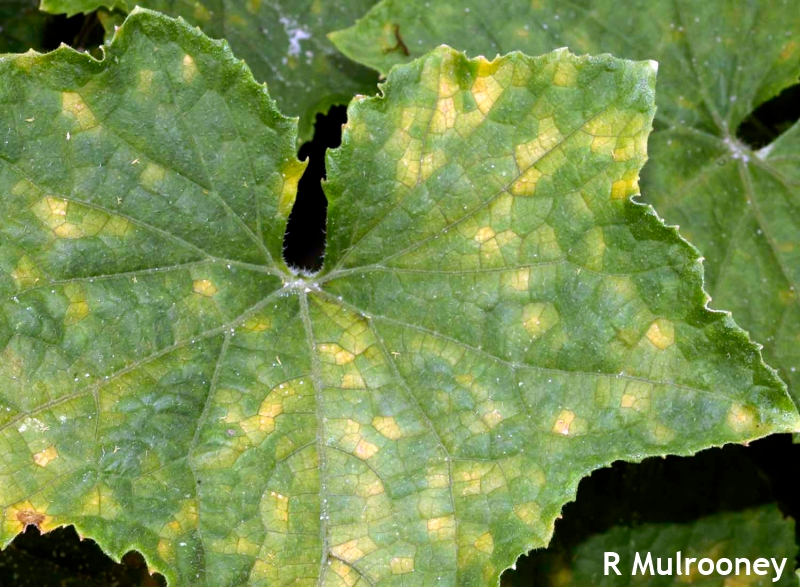 But when you see that beautiful zucchini plant in distress, your heart can sink. White spots or white powder on leaves is often an indication that your plant is under attack either by pests or disease.
But when you see that beautiful zucchini plant in distress, your heart can sink. White spots or white powder on leaves is often an indication that your plant is under attack either by pests or disease.
So, if you’ve been wondering about that discoloration and what you can do to fix or prevent it, this article is for you! Let’s dive into the most common causes of those white spots or white powder on your zucchini leaves this season.
Contents
- 1 Causes of White Powder or Spots
- 1.1 It Can Be Natural
- 1.2 Powdery Mildew
- 1.3 Mosaic Virus
- 1.4 Scarring
- 2 Final Thoughts
Causes of White Powder or Spots
While there are a few reasons why your zucchini leaves may be showing white spots or powder, the causes are all quite distinct and are very recognizable. The main culprit is a fungal disease known as powdery mildew, which is a common zucchini problem. But there are a few other reasons.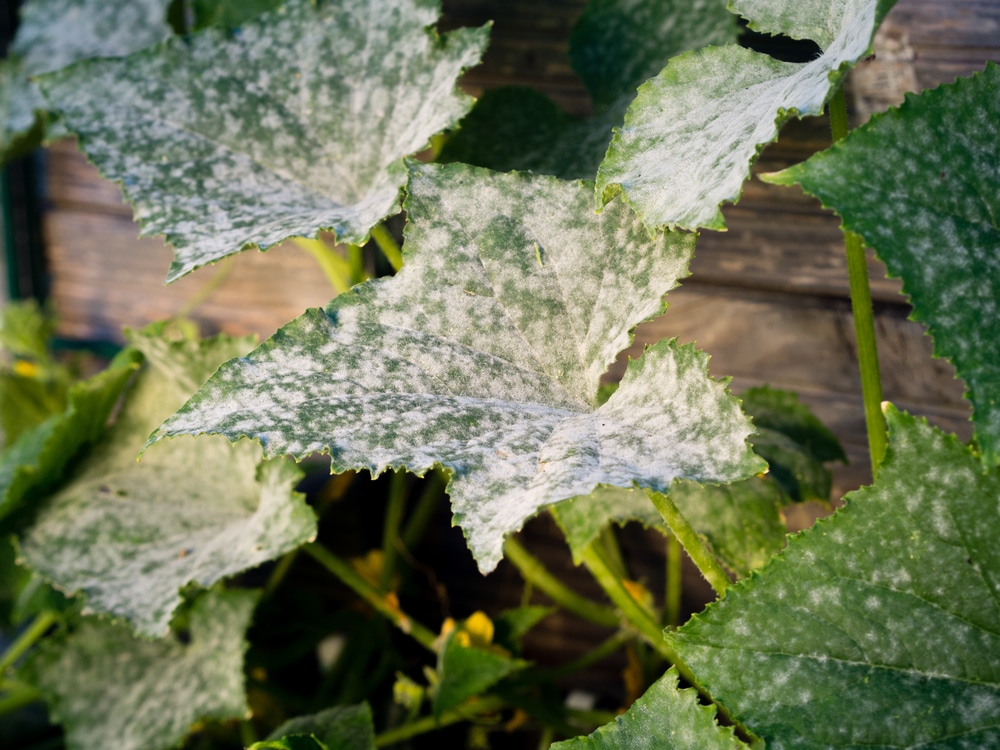 Let’s dig a little deeper.
Let’s dig a little deeper.
It Can Be Natural
In some varieties of zucchini, the appearance of white spots on the leaves is a completely natural process.While most cases of white spots or powder are cause for some concern, there is the possibility that what you’re seeing is completely natural. There are some zucchini varieties that have white mottling or variegation in their leaves. In this case, those white markings will be regular and symmetrical. Obviously, this is no cause for concern.
Certain types of zucchini can also develop white or silvery spots on their leaves as they mature. If you see these spots developing, take a closer look. If the discoloration doesn’t rub off and you don’t see signs of pests, this is a naturally occurring phase of your plant’s lifecycle.
Powdery Mildew
A fungal disease, powdery mildew, infects zucchini, leaving whitish dust on the leaves of the plant.Powdery mildew is, by far, the most common cause of white spots and powder on zucchinis.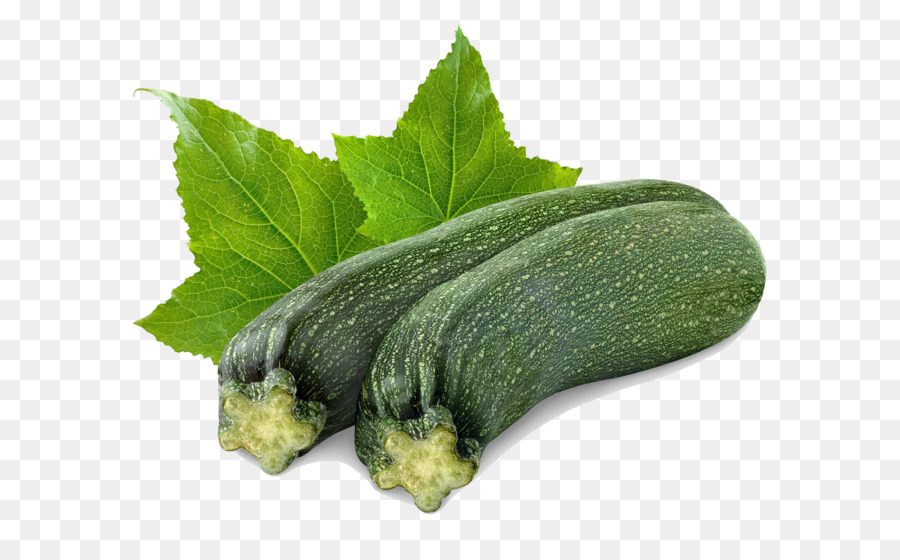
Powdery mildew is a fungal disease that strikes garden zucchini. It’s commonly found throughout North America. It is caused by several fungal species including Erysiphe, Microsphaera, Phyllactinia, Podosphaera, Sphaerotheca, and Uncinula. Your zucchini – along with cucumbers, beans, gourds, tomatoes, and peppers – are especially susceptible to it.
Visible symptoms can appear at any time in the growing season but tend to be more pronounced when there are swings in temperature and humidity.
This disease looks just like it sounds – it appears as a whitish dust that settles on the leaves of a plant. In the early days, it almost looks like a child sprinkled flour on the plant.
As the disease progresses, however, that dusting will turn into larger white blotches, fuzzy stems, and dead leaves. Powdery mildew prefers young plants and newer growth. You won’t often find it on very mature leaves.
Causes
There are many causes that can contribute to this common fungal disease.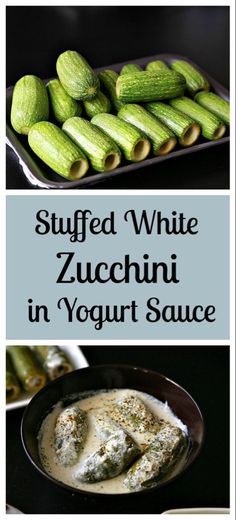
There are a number of reasons powdery mildew spreads in your garden. But know that even if you do everything right, you cannot completely protect your zucchini from the disease.
Fungal spores move pervasively through the air, on pollinators, and in water and it’s unlikely you can prevent a few from finding your plants. This fungal disease is just a part of the garden landscape that we need to learn to manage.
With that said, there are reasons your plants may be more susceptible to the disease this year. Prime factors include poor air circulation, not enough direct sunlight, water splash back (either from watering or rain), lack of mulch, using too much zucchini fertilizer, or infected compost material.
Prevention
To prevent this diseaase, make sure there is enough space between the plants, that they get enough light, water in the morning, and add mulch.Taking preventative measures will go a long way in helping protect from this annoying fungal disease.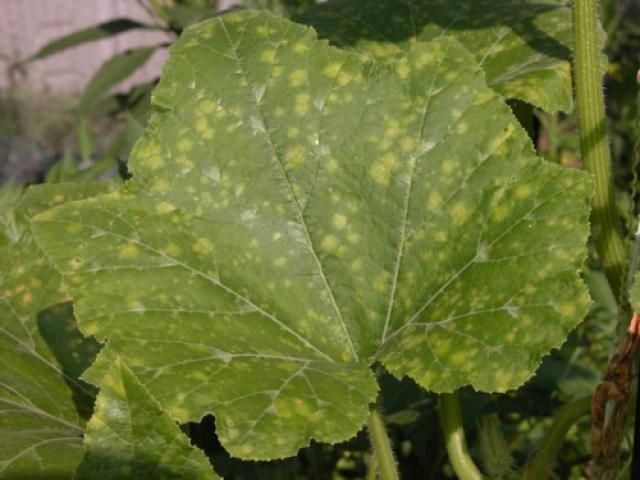
First, ensure your plants are spaced far enough apart. Zucchini plants, in particular, have very large leaves and can take up a considerable amount of space. Providing enough space between plants and other vegetables, allows them to develop fully and allows for proper air circulation.
Second, ensure your plants receive enough sunlight. Zucchinis need at least 6 hours of direct sun each day, but prefer 8-10. If they receive less than this, those excessively shaded leaves will be far more susceptible to fungal disease.
Third, ensure you are practicing proper watering techniques. Water in the mornings at the base of the plant (not the leaves) and do so slowly and deeply. Soaker hoses or a drip system are the ideal way of getting the right amount of water to your plants.
Ensure you have a thick 2-3 inch layer of mulch to act as a barrier between the soil and the leaves of your plants. This will protect against water splashing back from rain or overhead watering.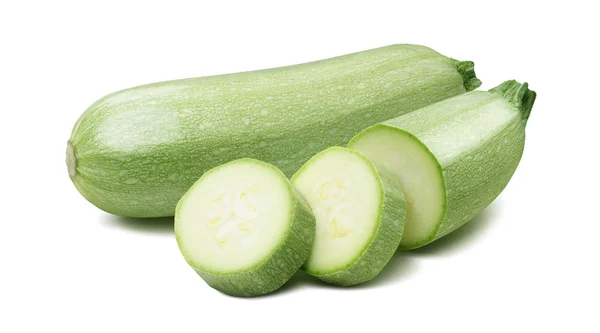
Treatment
Treat the leaves with neem oil or an organic fungicide.Treatment is pretty straightforward. We would normally recommend removing affected leaves and branches, but with zucchini this can be a bit complicated.
If you are still in squash vine borer season, cutting off those hollow stems creates a massive opening for the pest. We recommend only pruning off affected leaves after mid-July. Do so at the base of the stem.
Rather than removing leaves, treat them with a vinegar solution, Neem oil, or an organic fungicide. Follow package directions and be mindful of pollinators.
Consider planting disease-resistant zucchini varieties like Black Beauty or Desert to avoid this fungal disease problem altogether.
Mosaic Virus
The mosaic virus is incurable, so you’ll just have to remove the plant.Zucchini yellow mosaic virus is an aphid-borne disease that will eventually be fatal to your plant. While white mottled spots on zucchini leaves are a symptom, you will likely see others as well.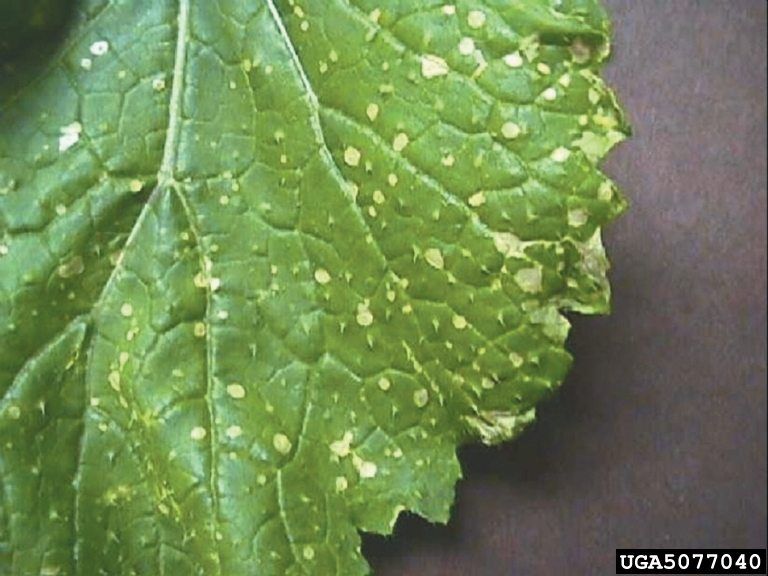
The most common symptoms are raised, war-like regions on the skin, bumps on the fruit, or misshapen zucchini. Mosaic virus is spread through infected seeds, aphids, or gardening tools that have come into contact with diseased plants.
Prevention and Treatment
Cover your zucchini in rows and pollinate them by hand to prevent the mosaic virus.Unfortunately, you cannot treat the mosaic virus and infected plants need to be removed immediately. If you have dealt with this disease before, consider covering your vegetables with row covers this year and hand pollinating flowers. Be sure to sanitize all tools and gloves after handling any infected plants.
Scarring
Thrips, aphids, and whiteflies can cause serious damage to your crop as they feed on leaves and fruits.Finally, your zucchini leaves could be showing signs of scarring from sap-sucking insects feeding on the plant. Insects such as thrips, aphids, spider mites, and whiteflies pierce the skin of zucchini leaves to get access to the juices within. These scars can look pale green or white, but won’t hurt the plant unless the pest infestation is extreme.
These scars can look pale green or white, but won’t hurt the plant unless the pest infestation is extreme.
Prevention and Treatment
To reduce pest populations, plant companion flowers that can attract predatory insects.Predatory insects will be your best friends when dealing with pest infestations like this. By companion planting certain herbs and flowers nearby, you can invite ladybugs, lacewings, and parasitic wasps to help keep pest populations down.
While you can use sprays like Neem oil, insecticidal soaps, or horticultural oil for pest management, this particular group can be well managed by spraying a hard stream of water at them.
If you spray these little sap suckers off leaves, they have a very hard time finding their way back to the plant. Just make sure to check the undersides of the leaves – they love to hide there.
Final Thoughts
While seeing healthy, dark green leaves develop white spots or powder can be alarming, take solace in the fact that most of the time, the problem is minor.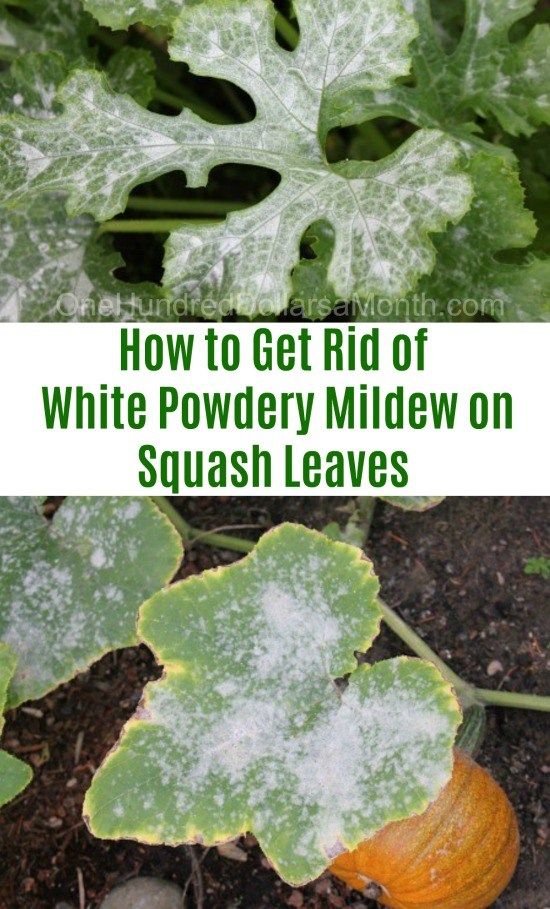 Of all the things we discussed in this article, powdery mildew is the most common. Be sure to take the time to identify the problem before taking action. Nine times out of ten, your zucchini plant will be just fine and you can enjoy that abundant harvest.
Of all the things we discussed in this article, powdery mildew is the most common. Be sure to take the time to identify the problem before taking action. Nine times out of ten, your zucchini plant will be just fine and you can enjoy that abundant harvest.
Zucchini leaves turned white - how to treat
White spots on the leaves of zucchini can be a sign of a disease (and it needs to be treated), appear due to care errors (and they need to be corrected), or be a varietal sign of a plant (there is nothing to worry about).
In order to make the right decision and - if necessary - help the plants, you need to accurately determine the reason why white spots appeared on the leaves of squash. More on this below.
Varieties
White spots on squash leaves are not always a cause for concern. There are varieties and hybrids in which the leaves are not quite familiar in color: they may have whitish spots that look like powdery mildew (more on that below). To pinpoint the nature of the stains, rub them. If it was not possible to erase the stain and the plant also looks absolutely healthy, you have nothing to worry about - this is a varietal feature. We list the most popular varieties and hybrids of zucchini with leaves of non-standard color: White-fruited, Golden, Pharaoh, Aliya F1, Iskander F1, Kavili F1, Carom F1, Sangrum F1 .
To pinpoint the nature of the stains, rub them. If it was not possible to erase the stain and the plant also looks absolutely healthy, you have nothing to worry about - this is a varietal feature. We list the most popular varieties and hybrids of zucchini with leaves of non-standard color: White-fruited, Golden, Pharaoh, Aliya F1, Iskander F1, Kavili F1, Carom F1, Sangrum F1 .
Powdery mildew
If the leaves of your variety of squash are "traditional" - green - in color, then diseases of this crop most often cause spots. So, for example, white spots on zucchini leaves often appear due to powdery mildew. The causative agent of this disease is a fungus that deprives the plant of nutrients and eventually leads to its death. nine0003
The first sign of powdery mildew is a whitish, flour-like coating on the upper side of the leaves. At the very beginning of the lesion, it looks like white spots that are easily erased from the leaf blade.
However, if no action is taken, these harmless white spots will soon coalesce and cover the entire area of the leaf blade. It will be impossible to remove them. In addition, they can be found not only on the leaves, but also on the stems.
It will be impossible to remove them. In addition, they can be found not only on the leaves, but also on the stems.
In the advanced stage of the disease, the spots turn brown, and the leaves curl and fall off - the plant dies. nine0003
Treatment of powdery mildew in zucchini
Powdery mildew in zucchini is often caused by non-compliance with the rules of agricultural technology. We list the main mistakes in growing zucchini:
- Incorrect planting . When planting, observe the manufacturer's recommended distance between adjacent bushes. Traditionally, zucchini is planted at a distance of 50-70 cm from each other. Too dense planting is one of the causes of powdery mildew. Feel free to remove excess plants to thin out plantings. nine0034
- Excess moisture . Excessive watering can also lead to disease. Zucchini do not belong to moisture-loving crops, so excess water is harmful to them. Irrigation should be started only after the topsoil has dried out.
 Usually zucchini is watered no more than once every 7-10 days. If you grow zucchini in a greenhouse, be sure to ventilate the room after each watering to reduce humidity. Do not allow it to exceed 70%.
Usually zucchini is watered no more than once every 7-10 days. If you grow zucchini in a greenhouse, be sure to ventilate the room after each watering to reduce humidity. Do not allow it to exceed 70%. - Excess nitrogen . Another reason that can provoke the appearance of powdery mildew on zucchini is an excess of nitrogen fertilizers. Nitrogen causes increased growth of green mass, plants become strong, pleasing to the eye, but at the same time quite vulnerable to diseases. For this reason, the lack of nitrogen supplements is less harmful than their excess.
If you did everything right, but powdery mildew still overtook your zucchini, you need to start fighting it as quickly as possible:
- Remove all diseased plant parts. Work must be carried out with a clean, disinfected tool.
- At the initial stage, a solution of potassium permanganate will help to cope with powdery mildew. Dilute 5 g of the drug in 10 liters of water and spray the remaining plants after pruning.
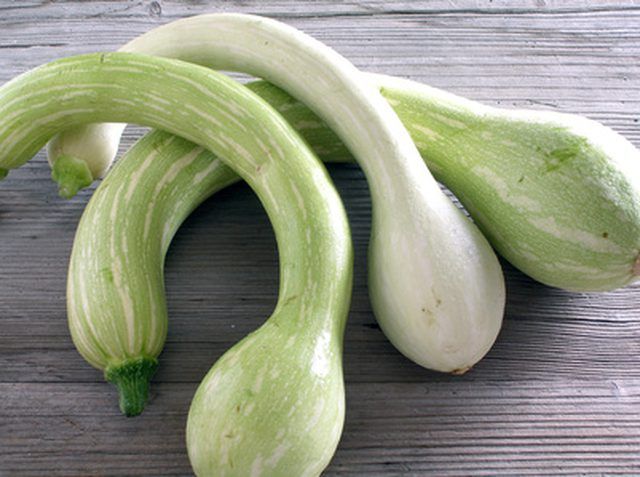
- In advanced cases, you will have to resort to fungicides - drugs to combat fungal diseases. From powdery mildew, Alirin-B, Fitosporin and Thiovit Jet help well. nine0034
Courgette downy mildew (downy mildew)
Sometimes whitish powdery spots can be a sign of downy mildew (another name for the disease is downy mildew). However, this white bloom appears - and this distinguishes the disease from true powdery mildew - not on the upper, but on the underside of the leaf blade. And on the top, parallel to it, spots of yellowish, purple or reddish-brown hues appear.
Over time, the leaves dry out, become dark, brittle and eventually fall off. nine0003
The disease usually begins to progress when the weather is damp with sudden temperature changes. Ideally, for normal growth, zucchini needs the thermometer to be at around 22 ° C during the day, and at least 18 ° C at night.
Treatment of downy mildew (downy mildew) of squash
Preventive measures against downy mildew and powdery mildew are similar:
- avoid high levels of humidity; nine0034
- try to water the beds only with warm, sun-settled water;
- when the ambient temperature drops, cover your plantings with non-woven material.
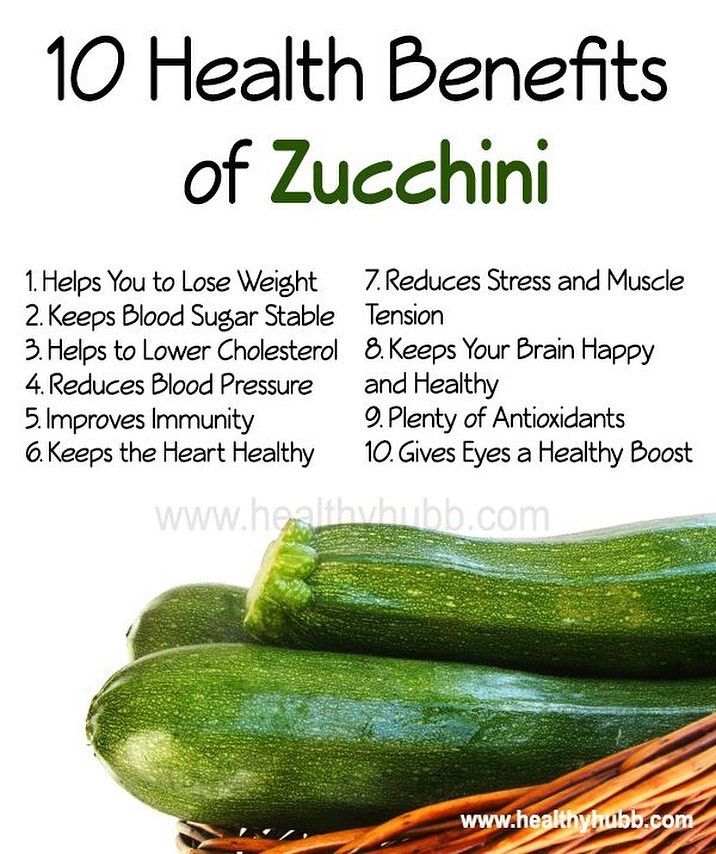
Treat immediately if signs of downy mildew appear:
- Stop watering completely.
- Remove damaged plant parts.
- Treat zucchini with any copper preparation (HOM, OxyHOM, Bordeaux liquid) or fungicides Abiga-Peak, Consento or Trichoderma Veride 471.
- Keep the soil clean, remove weeds in time, which may be pathogens.
Cucumber mosaic virus
Cucumber mosaic virus on squashes and pumpkins looks like this
Whitish spots on squashes can also occur due to a disease such as mosaic, which affects not only squash, but also other cucurbits. Its causative agent is the cucumber mosaic virus. He spends winter time in the soil or on weeds, and in the spring, after planting vegetable crops, he “transitions” to them. nine0003
Signs of zucchini damage by mosaic:
- spots of white, yellow or green color appear on the leaves;
- leaves change, become tuberous;
- the leaf blade curls over time, but does not rot or fall off;
- internodes are shortened, cracks appear on the stems along the entire length;
- fruits become stained, do not grow and die.
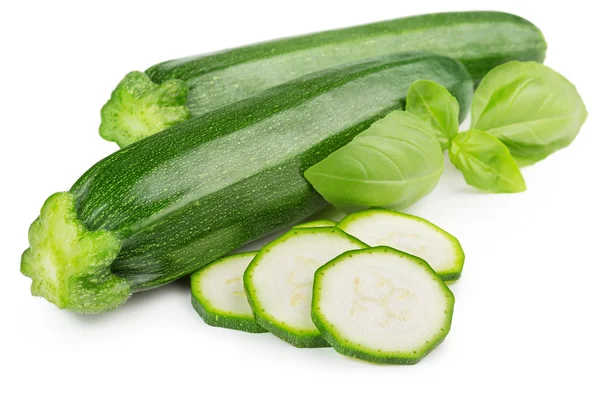
Courgette mosaic treatment
This viral disease is especially dangerous because there is no cure for it. When the first signs of the disease appear in the garden, the affected plants should be immediately removed and destroyed. This way you can stop the spread of the disease.
The only way to help the plants is to take preventive measures to prevent the appearance of the mosaic:
- Pre-sowing seed treatment. Before planting, pickle the zucchini seeds in a dark pink solution of potassium permanganate. It can also be used to disinfect tools that you use to process plants. nine0034
- Regular removal of weeds.
- Compliance with crop rotation: pumpkin crops can be returned to their original place no earlier than after 3-4 years.
- Planting cucurbits at a great distance from each other.
- Control of aphids - the main vector of mosaic - and ants that carry aphids around the site.
Other causes of white spots on squash leaves
White spots on squash leaves can also be caused by insect pests or care errors.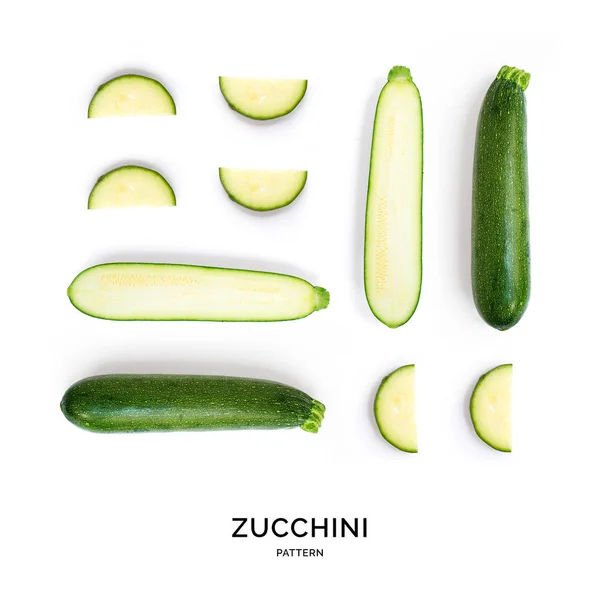 nine0003
nine0003
Spider mite
Dry, hot weather is ideal conditions for the development of spider mites. Signs of its appearance are white dots on the leaf (the dots are bite sites) and the thinnest cobweb on the lower surface of the leaf blade. By piercing the tissue, the mites suck the juice from the leaf. As a result, the leaf turns pale, dries up and falls off, then the bush begins to lose ovaries and flowers. If no action is taken in time, the plant may die completely.
Of the folk remedies for the fight against spider mites, garlic infusion is most often recommended. To prepare it, chop 2 heads of garlic, pour 1 liter of water over them and leave for 5 days. After that, strain the garlic infusion and spray the affected plants with it. nine0003
Do not forget about preventive measures. As a preventive measure, properly feed the plants: choose preparations with a high content of potassium and phosphorus. Ticks do not like high humidity, so to harm them, regularly moisten the bushes.
Their most effective chemicals are Antiklesh, Aliot, Iskra, Fitoverm, Fufanon-Nova, Bitoxibacillin, Thiovit Jet, Kleshchevit. Treatment with these drugs should be carried out at least 4-5 times with a frequency of 1 time per week. Moreover, each time it should be drugs with a new active substance, because. spider mites very quickly get used to one remedy and stop responding to it. nine0003
Lack of power
Improper nutrition causes deficiency of certain elements in the plant. So, a lack of potassium is expressed in a whitish border that appears along the edge of the leaf blade. With potassium deficiency, the number of flowers decreases, the growth of fruits is delayed, the plant becomes more vulnerable to various diseases.
You can make up for the lack of potassium with the help of mineral fertilizers or wood ash:
- Dilute a glass of ash in 10 liters of water, leave for two days. Feed zucchini at the rate of 1 liter of ash infusion per bush.
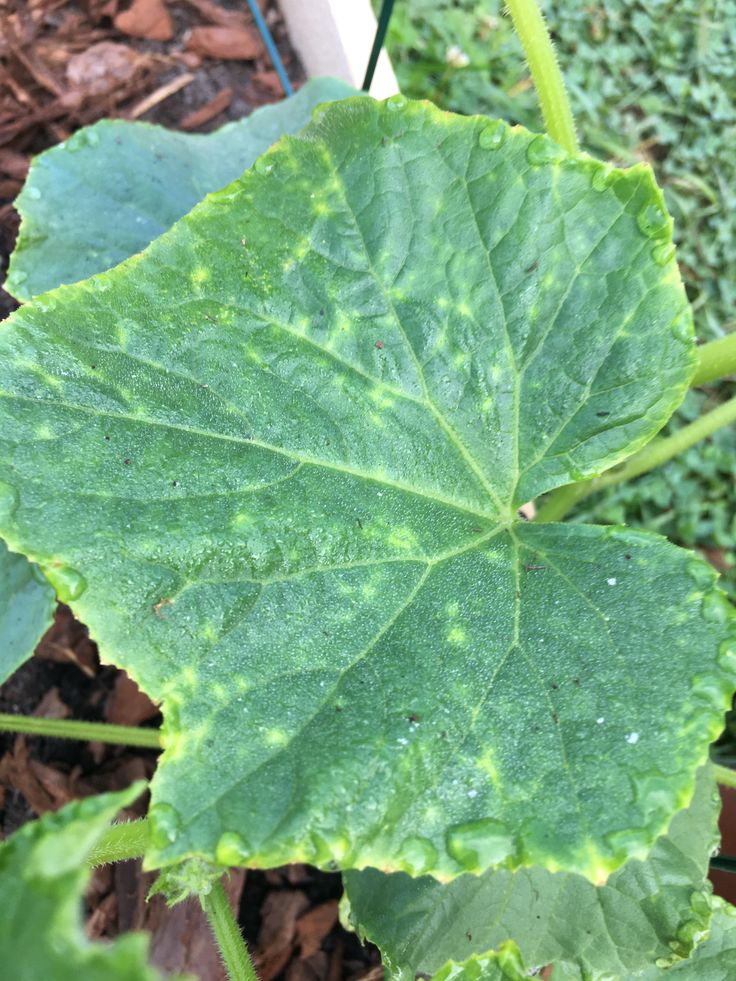 nine0034
nine0034 - From mineral fertilizers with a lack of potassium, potassium nitrate is used (25 g of the drug is dissolved in 10 liters of water) or potassium sulfate (35-40 g per 10 liters of water) for foliar (by leaf) feeding of zucchini.
Burns
Sometimes the cause of white spots on the leaves of squash can be improper watering. If, after watering, drops of water remain on the leaves, then on a sunny day they can lead to a burn of the leaf blade. To prevent this from happening, you need to water the zucchini either in the early morning or in the evening. In addition, during irrigation, water should not fall on the leaf - it should only be poured under the root. nine0003
Drops of fertilizer or chemical preparations can also cause burns, so leaf-by-leaf treatment should be carried out on a cloudy day.
If the leaf blade is already damaged, then you need to help the plant recover. For this purpose, use Epin, a natural biostimulant. Dilute 2 ml of the drug in 5 liters of warm water and spray the bushes with the prepared solution. The procedure should be carried out in the evening.
The procedure should be carried out in the evening.
In addition to white spots, there may be other signs of lesions on the leaves of squash. Find out what diseases they are signs of. nine0003
Diseases of squash in the open field - photos, descriptions, control measures
Have you found white or yellow spots on the leaves of zucchini and do not know what to do? Our article will help you recognize the "offender" and cope with the dangerous diseases of your favorite vegetables.
Diseases and pests of squash can destroy the crop in a fairly short time. Therefore, it is important to know the enemy in "face" and, armed with modern means of struggle, not to offend your garden crops. What is the most common disease of zucchini and their popular variety of zucchini when grown outdoors? nine0003
Apical bacteriosis of squash
If you are wondering why squash turned yellow, first of all pay attention to the weather and growing conditions for these vegetables. If there is moist soil on the beds, while the air circulates poorly between the plants, then it is likely that the zucchini has become ill with vertex bacteriosis. With a strong defeat, the ovaries not only turn yellow, but also rot.
If there is moist soil on the beds, while the air circulates poorly between the plants, then it is likely that the zucchini has become ill with vertex bacteriosis. With a strong defeat, the ovaries not only turn yellow, but also rot.
The fruits stop developing and become glassy. Some time later, brown spots form on the deformed zucchini. nine0003
Measures to combat bacteriosis of squash
Diseased plants cannot be saved. Therefore, the fight against bacteriosis of fruits consists mainly in competent prevention.
Plant healthy seeds. 2-3 months before sowing, pickle them with any systemic fungicide (according to the instructions). Take good care of your plants. Water the zucchini with water at room temperature and do not allow waterlogging of the soil.
Powdery mildew on zucchini
The main symptom of the disease is a white coating on the leaves of zucchini. This is a fungus that deprives the plant of nutrients and thereby leads to death (leaves curl and dry). nine0003
nine0003
Sometimes white spots also appear on the stems. Fungal spores are carried by water and wind and can infect other garden and horticultural crops, so you should not hesitate.
Measures to combat powdery mildew on squash
Observe the watering regime, avoid waterlogging and strictly adhere to the norms of applying nitrogen fertilizers, since the fungus develops rapidly with their excess. Remove the affected parts of the plant, and spray the remaining zucchini with a fungicide (Baktofit, Alirin, Fitosporin-M). nine0003
When choosing seeds, choose powdery mildew resistant varieties.
Downy mildew (peronosporosis) on squash
This disease is also most often manifested in high humidity and watering plants with cold water. Oily greenish-yellow spots appear on the leaf plate, which eventually become a grayish-brown hue. Often they are powdered with a dirty white coating. The leaves of the zucchini seem burned and gradually dry out. nine0003
Control measures for downy mildew on squash
Stop watering at the first sign of disease. Spray the plants with a solution of Abiga-Peak, Consento or Trichoderma Veride. If it is cold outside, cover the zucchini with non-woven material (spunbond, lutrasil, agril, etc.). Ideally, the air temperature should not fall below 22°C during the day and 18°C at night. In addition, when growing zucchini, it is important to observe crop rotation.
Spray the plants with a solution of Abiga-Peak, Consento or Trichoderma Veride. If it is cold outside, cover the zucchini with non-woven material (spunbond, lutrasil, agril, etc.). Ideally, the air temperature should not fall below 22°C during the day and 18°C at night. In addition, when growing zucchini, it is important to observe crop rotation.
Courgette anthracnose
If brown-yellow rounded spots with blurred outlines form on the leaves during the growing season or during harvesting, then most likely anthracnose attacked the zucchini. The foci of infection expand rather quickly and soon occupy almost the entire leaf, the spots gradually turn brown. Elongated depressed spots with a yellow-brown bloom also appear on the stems. The fruits wrinkle, lose elasticity, rot and become bitter.
Control measures for marrow anthracnose
The disease progresses with frequent watering during the hot part of the day. Water the zucchini in the evening, do not overmoisten the air.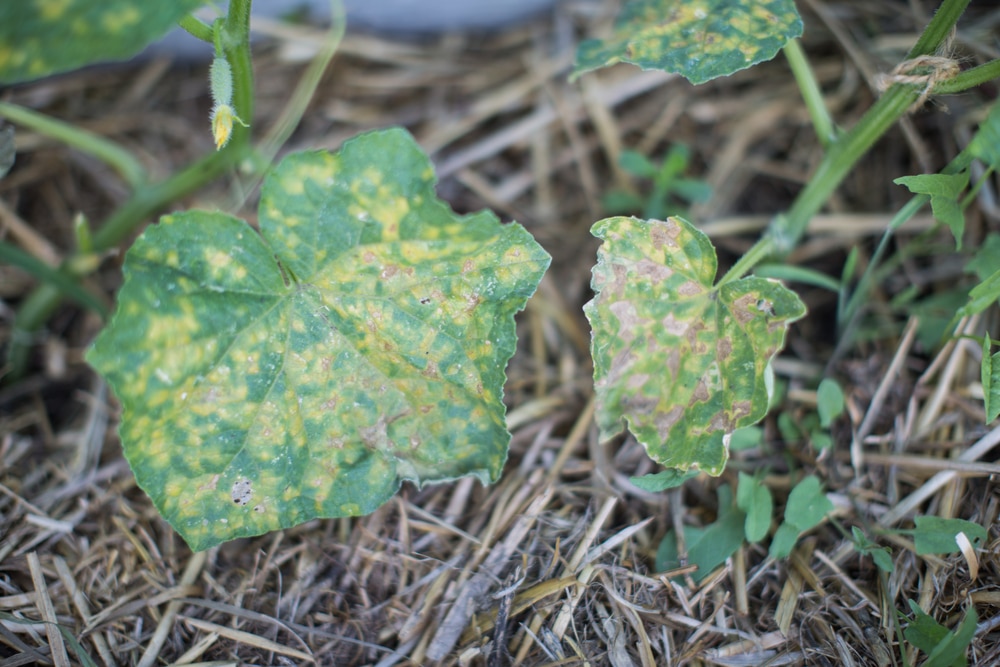 At the first stages of the manifestation of the disease, spraying with Abiga-Peak, Consento, Trichoderma Veride, Fitosporin, Agrolekar will help to cure zucchini. Most often, anthracnose develops in greenhouses; in the open field, vegetables get sick mainly when the rules of agricultural technology are not followed.
At the first stages of the manifestation of the disease, spraying with Abiga-Peak, Consento, Trichoderma Veride, Fitosporin, Agrolekar will help to cure zucchini. Most often, anthracnose develops in greenhouses; in the open field, vegetables get sick mainly when the rules of agricultural technology are not followed.
Squash rot
Squash rot for various reasons. For example, dry vertex rot occurs as a result of a lack of calcium in the soil. The symptoms of this disease are very similar to vertex bacteriosis. Root rot spreads mainly in plants in protected ground due to frequent fertilizing with organic matter and high humidity. nine0003
White and gray rot develop due to waterlogging of the soil, dense plantings, changes in day and night temperatures, lack of trace elements or excess nitrogen. White and gray spots with black dots may appear on fruits, leaves, ovaries.
Rot control measures
In case of calcium deficiency, apply ground eggshells and wood ash to the soil (at the rate of 1 cup of ash per 1 sq.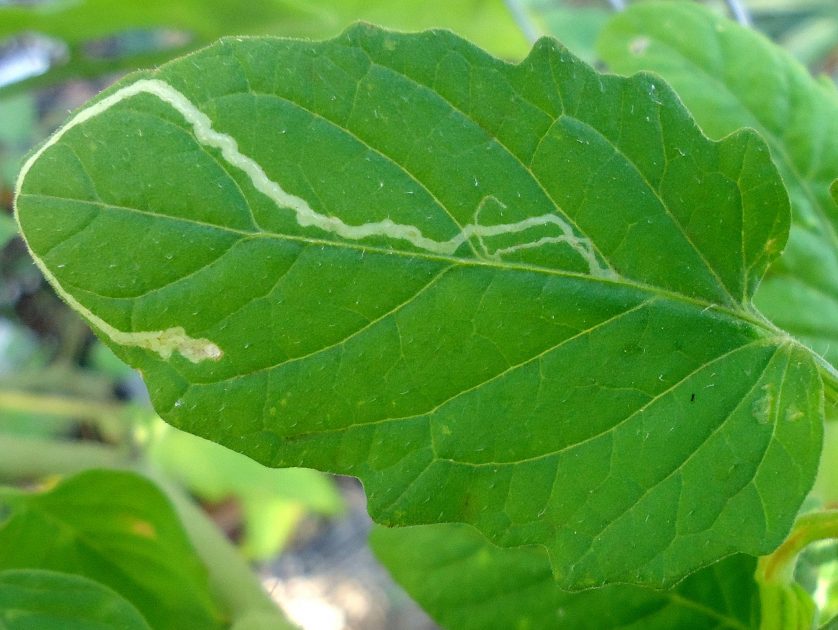 m). Remove all infected ovaries and leaves. Spend foliar top dressing on the leaves with phosphorus fertilizer (for example, ash infusion). Spill the soil with a Fitolavin solution, and then add unused compost there to restore the soil microflora. nine0003
m). Remove all infected ovaries and leaves. Spend foliar top dressing on the leaves with phosphorus fertilizer (for example, ash infusion). Spill the soil with a Fitolavin solution, and then add unused compost there to restore the soil microflora. nine0003
To prepare foliar top dressing useful for zucchini, fill a bucket 1/3 with ash, fill it to the very brim with hot water and insist for two days. After that, the infusion is filtered and used for spraying on the leaves.
Fusarium wilt
Fusarium wilt attacks the root system first. After that, the disease passes to the stem and leaves. They turn yellow, dry and fade. On the transverse section of the shoot, browning of the vessels is noticeable.
Fusarium control measures
Dust the underside of the shoots and the root with wood ash. In case of severe infection, treat with Fitosporin or Sporobacterin according to the instructions. Take measures to improve the soil: sow green manure, spill the soil with a solution of an EM preparation (for example, Baikal EM1).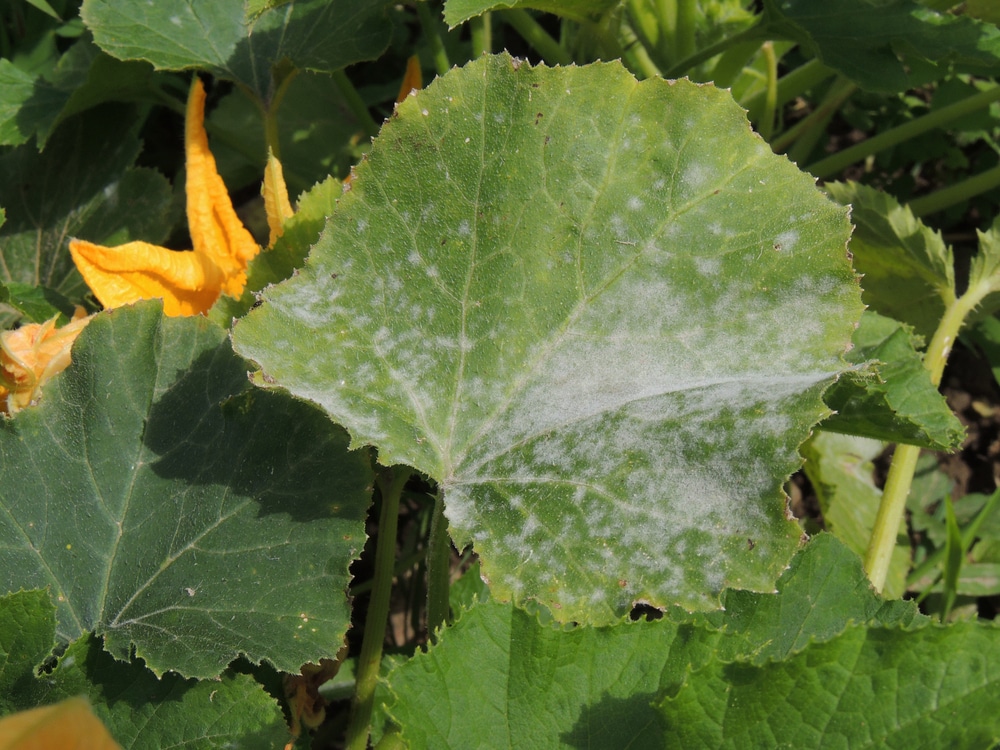
Learn more
- 600W vs 900w nutribullet
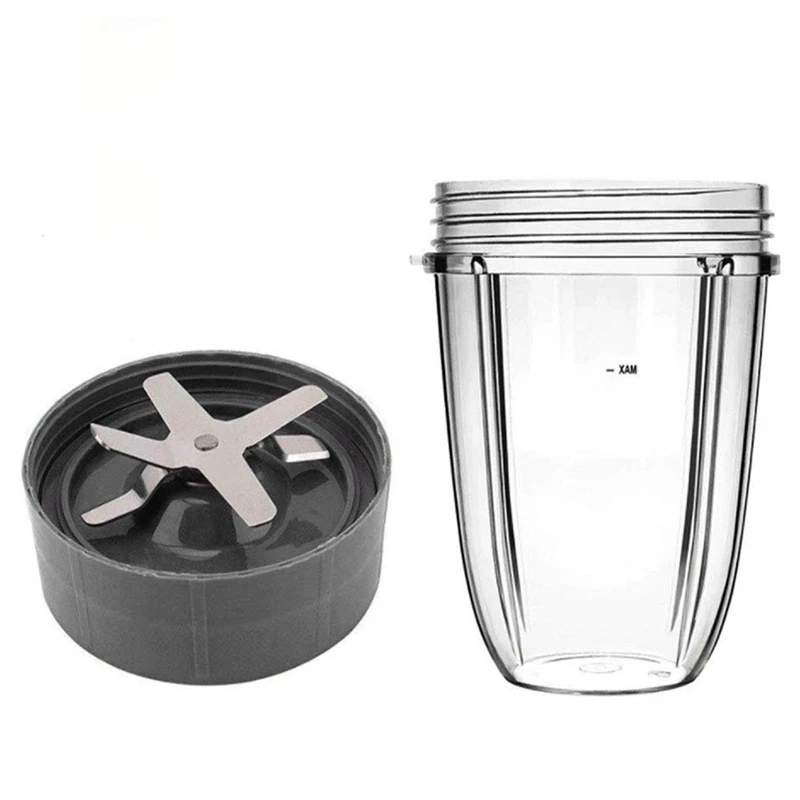
- Designs for tiny kitchens

- How do you clean kitchen cabinets

- Ideas for curtain valances

- Design of mirrors

- Food processor for dicing vegetables

- Best gazebo lighting

- Infestation of maggots
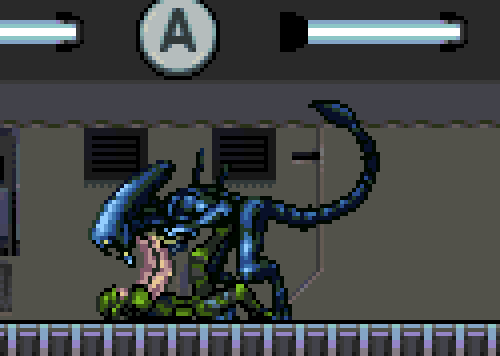
- English cottage window treatments

- What does birch trees look like
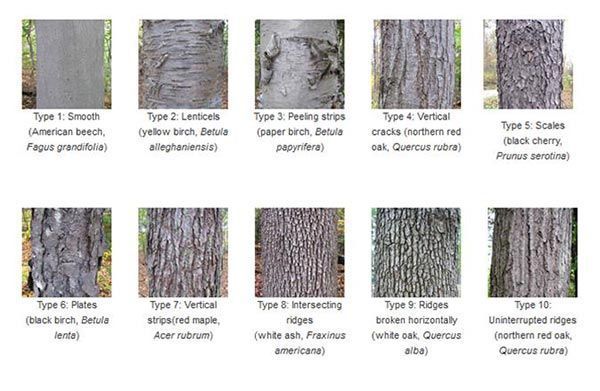
- Purple painting ideas
